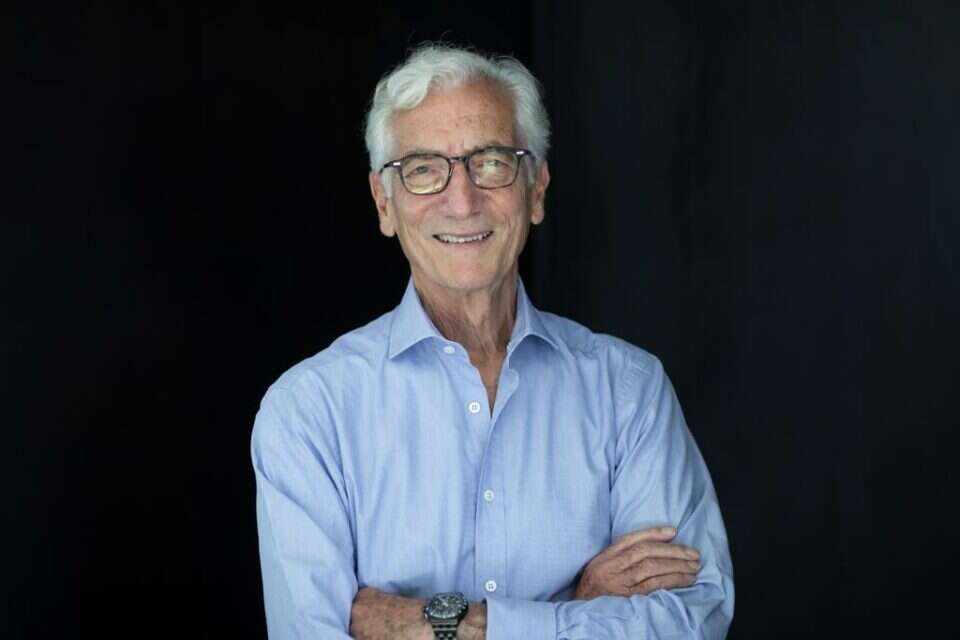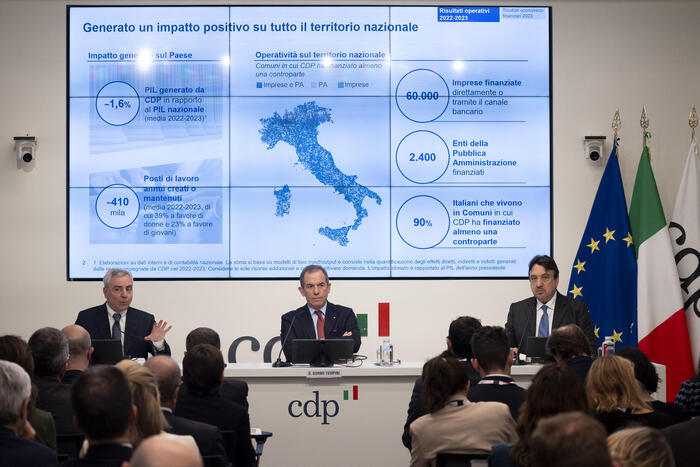Streaming more money towards old ideas that are no longer working will not change the world.
We need new ideas and new approaches.
New words are coined to express new ideas.
It happens in economics as in the world of scientific discoveries.
What is "Impact?"
The term "Impact Investments" was coined in 2007, at a meeting sponsored by the Rockefeller Foundation in the center of the fund's Bello in Italy, and was intended to replace the term "social investment".
In the simplest terms, impact is the degree of benefit of action to humans and our planet.
The idea is not only to reduce the negative consequences but to actively create good results, a positive impact, and this idea has social and environmental dimensions.
"Social impact" means improving the well-being of individuals, as individuals and as communities, and increasing their ability to live productive lives.
It represents real social progress: education and training for the young, food for the hungry, medical care for the sick, employment and livelihood for the poor.
"Environmental impact" is the positive consequences that business activity and investment have on the planet.
In other words, are we preserving the earth and passing it on to future generations so that they too can enjoy it and pass it on in good condition to future generations?
Impact, Photo: Matar Publishing
We must bring the impact to the heart of society and place it at the center of the economic system.
The current method encourages decisions aimed at making as much money at as low a risk level as possible.
We must move to a method that will also encourage decisions that will make it possible to make as much money as possible, but in a way that is consistent with achieving maximum impact at minimal risk.
Impact should become part of the company's DNA, part of the triple coil, risk-return-impact, which will influence every decision that is made regarding
For consumption, employment, business and investment.
It needs to become a driving force in the economy.
Following this new model, the social and environmental benefit of decisions ceases to be a side issue and becomes a central element in thinking.
To do this, we need to know how to measure impact reliably.
We take the risk and return model for granted, but it has not always been the dominant model.
Until the twentieth century, when business owners and investors engaged in decisions about capital allocations, they only measured profit expectations.
Only in the second half of the twentieth century did the measurement of "risk" formally enter the picture, and the quantification of risks and the examination of the relationship between them and the return became a natural behavior.
Risk is defined as the probability of unwanted outcomes that could cost investors money.
This sounds like something that is hard to define, and in the past was indeed treated as an immeasurable thing, but the academic community has eventually found ways to measure risks according to uniform criteria in all types of investments.
By the end of the twentieth century, everyone was talking about risks and measuring them in the same ways.
Measuring the risks had far-reaching implications for the investing community.
It has led to new theories like portfolio diversification, which has spawned new asset types with high levels of risk and even higher returns.
These new types of assets included venture capital - which funded the technology revolution - private equity investments and hedge funds.
It has also enabled the establishment of new areas of investment, such as investments in emerging markets that have funded globalization.
If we jump forward to the present day, it seems that the idea of impact is now causing a revolution like the one that took place following the idea of risk.
Investments are increasingly being considered in terms of their positive and negative impact, and the interest of investors and businesses in combining the impact in their decision-making is growing.
Is impact more difficult to measure than risk?
Not at all - in fact, it can be said that it is easier to measure impact.
All over the world there are people who are developing methods to measure it.
The Impact Revolution promises to change the world no less than the Industrial Revolution, or the technology revolution closer to our time.
It is a peace-loving movement that was born among consumers and young entrepreneurs, who once again fundamentally change the accepted business models, but this time with the aim of improving human lives, reducing inequality, and improving the state of the planet.
The technology revolution
It was amazing to see how, within a few decades of my life, new technology companies overtook the giants that had long dominated their field.
Start-ups that initially few knew about - companies like Amazon, Apple, Google and Facebook - have jumped to the top of the list of 30 companies with the largest market value in the world, in just 30 years.
We are all familiar with the stories of entrepreneurs who, thanks to the talent and drive that drove them, devised new ways to solve old problems, invented new and valuable technologies, and changed the face of the modern world in which we live.
Of course, such breakthroughs do not occur in a vacuum.
One of the main factors that enabled the scale and speed of the technology revolution was the availability of venture capital investments that flowed funding to the new technology companies - a sector that is currently worth a trillion dollars.
If 50 years ago you would have told people that you work in "venture capital investments", they would not know what you are talking about.
Venture capital investments were invented after World War II, established in Silicon Valley in the 1970s and 1980s, and spread around the world with the advent of the idea of investing in small, fast-growing technology companies.
Those early-stage entrepreneurs were not only technically sophisticated, but also skilled at convincing investors that they could make money if they breathed life into their visions.
Investors measure success based on profits, and weigh the risk threat against the return potential.
When they decided to invest in those early technology companies, it was a kind of leap of faith.
In the early 1980s I was one of those investors.
The company of which I was one of the founders, the Apax Fund, has invested in almost 500 pioneering start-ups.
Each of them sought to imprint an imprint that would not be erased in his field.
Among other things, we invested in PPL Therapeutics - the company responsible for Dolly, the first cloned sheep in the world - in Apple and AOL.
One of the main reasons I chose to be a venture capitalist was the feeling that I could have a positive impact on human society and at the same time make money.
The Apax Foundation responded to hundreds of entrepreneurs, who not only enriched themselves, but also provided wealth to the people who worked with them and to the communities in which they lived.
They have created many thousands of jobs in diverse fields, from technology to consumer products and media.
I believed that creating new sources of income and jobs that would improve people's lives would improve the condition of human society as a whole.
Over the years, however, I have seen the gap between rich and poor widen.
There were societies that ultimately did more harm than good, and the situation of many at the bottom of the social pyramid did not improve but rather worsened.
In the UK, despite the welfare state's safety net, reducing poverty is still a huge challenge, and economic opportunities for those living in deprivation have not expanded.
In the rest of the world the story is similar.
Although 60 million jobs were created in the technology sector in the United States, social and economic inequality continued to spread.
The gap between supply and demand was part of the problem.
The new skills required for positions in the technology sector depended on higher education, so the supply of suitable workers was small.
Companies that competed for talent caused a rise in wages in the technology sector, while wages in low-growth sectors shrank.
The combined impact of globalization, of new technologies replacing employees, of the flow of private capital investments, and of the low cost of loans, has created a high financial return for the top percentile.
The competition for skilled and talented workers contributed to a "perfect storm," in which the rich got richer and the poor became even poorer.
By 2000 it was already clear that this model was socially poor.
The technology revolution has indeed created incredible wealth and has also had many social contributions, but not only have the world's huge social and environmental problems not been resolved, but some have even exacerbated.
Constant consumption of natural resources has raised global temperatures, which has led to the extinction of species in the wild, deadly fires, floods and the destruction of the biodiversity on which our existence depends.
If we do not fix these problems, the results could be catastrophic, so a new revolution in thinking is needed.
We need new solutions that will address both social and environmental problems - two currents that are now merging because climate change is forcing people to emigrate.
But where do we find these bold solutions?
If neither governments nor the private sector have succeeded in making the much-needed improvement so urgent, the answer may lie in changing the economic system.
The birth of the idea
I began to understand that a method was needed in which the interests of businesses, investors and entrepreneurs would merge with the interests of governments, non-profit organizations, philanthropists and impact initiatives.
A method that will push them to work together to improve people's lives and the state of the environment.
But what would such a method look like?
It turned out that the answer is very simple: a connection needs to be made between social initiatives and investments, in a way that will allow entrepreneurs to finance purpose-oriented businesses and charities.
Such an approach would allow to harness entrepreneurs with talent and innovation who would solve old problems in new ways.
Just as technology entrepreneurs at the time brought about change with the help of investment capital, impact entrepreneurs can advance solutions to the most pressing problems of our time.
The enormous social or environmental challenges before us require a new approach to investing, an approach that will find solutions to them.
Investments are the fuel of our economic system, and if we want to attract investors, we should start looking at the world through their eyes.
It means focusing on profits and impact, and evaluating success based on measurable results.
One can look at social challenges as an opportunity to invest in the community.
Such a point of view can yield attractive financial returns and arouse the interest of those who would otherwise focus - both in terms of talent and in terms of investment - on profits and nothing more.
In 2002, together with Philip Newborough, a former fellow at the Apax Fund, and with Michelle Giddens, a right-hand man in the Social Investment Task Force, I co-founded the Bridges Fund to channel venture capital into the poorest parts of the UK.
The idea was simple: back up businesses that operated in the 25 poorest percentages in the country, to improve the lives of the most vulnerable populations.
We wanted to make a difference for the better through investing, so we thought as investors, and started looking for a way to make a measurable improvement alongside a financial return of 12-10 percent per year.
18 years later, Bridges has already raised over £ 1 billion and its average annual return is 17 per cent. And just as importantly, the fund has made a significant positive change. In 2017 alone it funded 1.3 million hours of quality care, provided health services For 40,000 people, it saved 30,000 tons of carbon emissions, directly supported more than 2,600 jobs, and helped more than 2,600 children achieve better academic results.3 Through our investments, we have helped some of the best impact businesses in the country grow. Large size.
The British government backed the first fund raised by Bridges with a $ 26.6 million investment, making it easier to attract investment from the private market.
She helped with another important social initiative in 2008, following recommendations from the unclaimed Property Commission that I had set up three years earlier.
The Labor government passed laws that transferred money lying in bank accounts without requiring 4 for three social purposes: founding a social investment bank, the establishment of which was one of the proposals of the Social Investment Task Force in 2000, youth support and financial inclusion.
Four years later, $ 532 million of that money, plus $ 266 million from the four largest banks in the UK, was used to set up Big Society Capital - the world's first "social investment bank".
David Cameron inaugurated it on the London Stock Exchange in April 2012. Since then, the bank has significantly strengthened its investment in charities and given them capabilities to operate on a large scale and discover innovation.
Impact in action
Our early success encouraged me to set up in 2007 the UK's first social investment advisory firm, Social Finance, with the help of philanthropists David Blood, Lord Stanley Fink, Sigrid Rausing and Sir Philip Hume.
Our core mission was to invent ways to connect social entrepreneurs with investment capital.
We started recruiting talented young people from the financial and social sectors, and by the end of the third year our team already numbered 18 people who worked under Chairman Bernard Horn (former CEO of NatWest Bank) and CEO David Hutchison (Director of Investment Banking in the UK). Formerly Dresdner Kelinwort).
Towards the end of 2009, two team members, Toby Eccles and Emily Bolton, came to my office to talk about ways to reduce the rate of crime return among inmates.
The statistics from around the world were astounding: no less than 60 percent of young inmates return to prison within 18 months of their release.
This figure is related to a chain of negative consequences.
Imagine what we could have done if we had a way to reduce that number.
Think of the human suffering that could have been prevented, the families that could be reunited, and the reduction in crime rates, not to mention the savings to the government.
Toby and Emily suggested linking the reduction of the crime return rate to a financial return for investors, in a way that would yield a return based on the social success achieved.
In other words, investors will be paid to reduce the number of prisoners who have returned to crime.
It was a new and groundbreaking idea.
I was inspired by the way venture capital convinced investors to finance the growth of start-ups.
Working together with Toby, Emily and David Hutchison, they designed the social bond as an investment instrument that could bring investment to execution organizations working to advance social goals.
With our proposal behind us, detailing how the social bond would work, we met with Justice Secretary Jack Straw.
We proposed raising several million pounds from investors to fund charities that have already worked to help prisoners, if the Justice Department agrees to pay investors according to increasing the number of prisoners who will not return to jail.
Upon hearing the idea, Jack Straw hit the table, and with a smile said to his men, "I know we are not supposed to be the first to do things, but we will do it!"
But how can crime prevention be a good investment?
Well, crime is a very expensive thing - governments spend millions every year on the war on crime and the imprisonment of criminals, not to mention the costs of their housing and food while in prison.
If our effort helps the government save money, both the investors and the organizations they fund will be able to earn a tiny fraction of the amounts saved.
People's lives will improve, governments will save money, and investors will earn reasonable sums.
In such a situation all parties benefit.
Thinking about social challenges both from the point of view of social organizations and from the perspective of investors, led us to plan the social bond as a tool to help social entrepreneurs accelerate social progress through the use of private investment.
One of the first people to understand the importance of the social bond was Prince Charles.
Shortly after the announcement of the Peterborough bonds, I received a handwritten letter from him congratulating us on the arrival of our social bond and praising its potential to fund charities that will work to solve social problems close to his heart. strong.
The social bond
Social bonds involve three main players: the pay-as-you-go factors, social service providers (usually these are non-profit organizations, but they can also be purpose-oriented businesses), and investors.
A financial advisory body, such as Social Finance, can assist in the planning and implementation of transactions, and an external and independent party verifies that the results are achieved, similar to the auditor.
The social bond - known as the Social Impact Bond in the UK, Pay For Success in the United States, the Social Benefit Bond in Australia, and the Contrat à Impact Social (Social Impact Contract) in France - is not a bond in the traditional sense.
In fact, it is a results-based contract for the provision of services between the client, the entity interested in paying for the results, and an operating organization whose job is to achieve a defined social result.
An investor with social motives provides the financing for the services, thus freeing the ordering party from the financial risk.
If the results do not reach the goals set in the contract, the investor loses his money, and the investment actually becomes a philanthropic contribution.
Conversely, if the goals are achieved, the investor gets back his investment plus a return, and the return increases according to the results achieved.
The factor that finances the results is the party that pays the investors, if the concept of social improvement that he wants the program to achieve.
Usually this factor is a government, but sometimes it is an official aid organization or a philanthropic foundation.
The financing bodies define together with a financial intermediary, or directly with the operating organization, the objectives, the schedule and the payment steps.
They pay investors only if the defined positive results are achieved.
This method has several benefits for service providers - non-profit organizations or purpose-oriented businesses that provide some social service or intervention.
It provides them with large-scale funding from the outset that gives them the flexibility to implement the interventions with the best results, and allows them to experiment and innovate.
According to the traditional approach, the achievements of service providers, who receive funding from philanthropists, are evaluated in light of indicators that focus on their activities.
To gauge success, philanthropists tend to check data such as the number of inmates joining a rehabilitation program, or the number of learning hours given to inmates.
In contrast, an outcome-focused approach will test the reduction in crime rate, as at the end of the day it is a more important measure than the number of inmates who have joined the program.
This change in the form of evaluation motivates service providers to focus on core objectives and develop new and effective collaborations to achieve those objectives.
When we at Social Finance decided to work to reduce crime return rates in the UK, we created the social bond described above.
Our investors were 17 philanthropic funds, including the Esmée Fairbairn Fund in the United Kingdom and the Rockefeller Fund in the United States.
We met with officials in the British government and reached a deal: We will raise $ 6.7 million to fund service providers who have already worked with inmates at Peterborough Prison.
If after five to seven years we fail to reduce the crime return rate by 7.5 percent, compared to a control group of released prisoners, no money will be returned to investors.
But if the crime return rate is reduced by 7.5 percent or more, the government will return the original investment plus interest that will go up depending on the reduction that is achieved.
The main point of this initiative was that the government would pay only 30 to 50 percent of the money saved thanks to reducing the use of courts and prisons.
After the payment to the investors, there will still be a budget surplus.
At the same time, investing funds will be able to invest their money in other impact-generating initiatives, and service providers will continue to receive funding to support their work.
Peterborough bonds reduced 9.7 percent in convictions and yielded investors a 3.1 percent return a year over the capital they invested. People's lives improved, the government reduced the burden on courts and prisons, and investors saw a return - the bond was a new way of thinking about The financial world in advancing social goals.
Some may say that philanthropists are already funding such activities, but this is only partially true.
While some of the philanthropic foundations we have worked with have already funded inmate rehabilitation, we have consolidated them and pooled their capital into a single initiative that has focused on achieving a defined and measurable goal.
Moreover, the service providers who did the important work with the prisoners, received funds that enabled them to operate on a large scale.
Our work has also consolidated these service providers under one umbrella and allowed them to work in unison.
The last thing we achieved was to help these philanthropic funds - our investors - get back the amounts of money they spent and more, which allowed them to reinvest the money.
Adoption of this model on a wider scale holds enormous potential for anyone seeking to find a solution to social problems, in non-profit organizations, in the business sector or in government.
The implications for the social sector are enormous.
In the UK alone, between 800,000 and one million people work in non-profit organizations, and philanthropic funds in the country own assets with a total value of about $ 133 billion.
In Europe, 11 million people work in non-profit organizations.
In the United States, 9 or 10 million people work for more than 1.7 million charities, and American philanthropic foundations hold $ 850 billion in assets.
But despite these significant resources, there is a constant shortage of money among charities, and only a few of them manage to operate on a large scale.
The role of governments
Only governments have the ability to require businesses and investors to measure the impact of their activities and report it according to uniform metrics.
In an initiative to prevent inmates from returning to crime discussed earlier in this chapter, the British government measured the success of the program in terms of public savings.
To help make this way of thinking routine, the British government in 2014 released the Unit Cost Database, a database containing the estimated cost to a country of over 600 problems, from crime and unemployment to the homeless.
These estimates enable reliable quantification of at least some of the benefits that impact investments achieve.
Local authorities, charities and social initiatives use this information to develop performance-based contracts and to determine the terms defined in social bonds.12
Other governments, including the Portuguese government, have taken similar steps in the wake of the British government, and at the same time independent efforts are being made around the world to quantify the cost of social problems.
One of these efforts is the Global Value Exchange, a database built using the mass-outsourcing approach of over 30,000 data and impact indices, which offers estimates similar to that of the UK government costs database.13 For example, the annual cost of missing can be calculated A home without work on the basis of the allowances he receives, the income tax and social security contributions he does not pay, and the loss of economic output he could have had.14
We must now prioritize the development of standard metrics for each social area, which will allow us to compare the impact of different interventions.
The goal is to go beyond the measurement of impact in individual cases to the measurement of all the important forms of impact that organizations and initiatives have.
Both public and private organizations have an impact, and it is time to measure it reliably, attach explicit value to it, and demand that decision makers around the world make better decisions.
When we can properly measure and quantify an impact, the combination of impact in the decisions of investors and businesses will become second nature to them, and ultimately all investments will be impact investments.
Were we wrong?
Fixed!
If you found an error in the article, we'll be happy for you to share it with us






/cloudfront-eu-central-1.images.arcpublishing.com/prisa/KGNL7LPITFFT5BPP4G4PXN5NCU.jpg)


